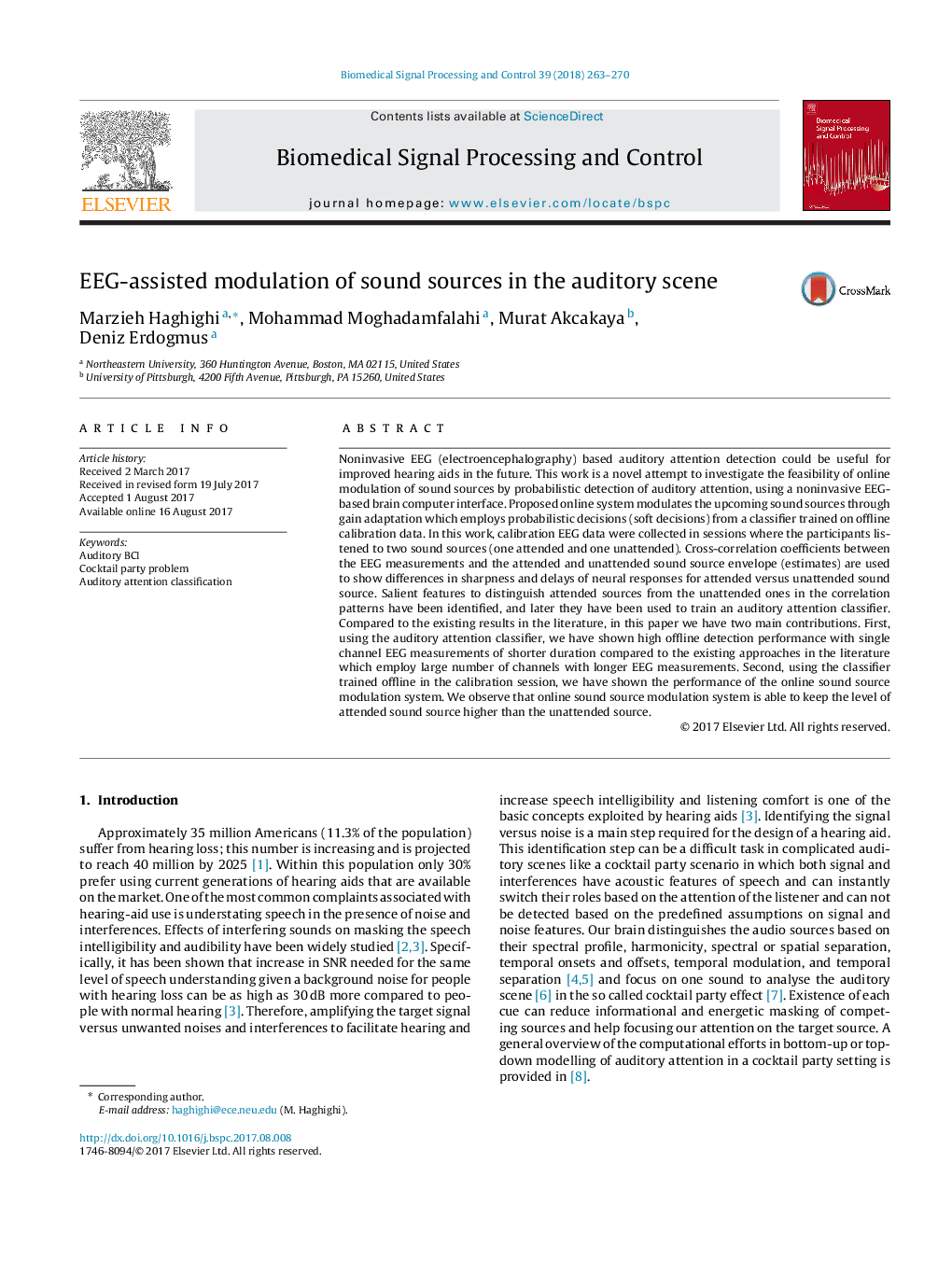| Article ID | Journal | Published Year | Pages | File Type |
|---|---|---|---|---|
| 4973484 | Biomedical Signal Processing and Control | 2018 | 8 Pages |
â¢Attended sound source detection problem using EEG measurement is revisited.â¢High attended sound detection accuracy achieved using 20 s of single channel EEG.â¢A brain interface that modulates sound sources in the auditory scene is proposed.â¢Developed BCI keeps the level of attended sound source higher than unattended one.
Noninvasive EEG (electroencephalography) based auditory attention detection could be useful for improved hearing aids in the future. This work is a novel attempt to investigate the feasibility of online modulation of sound sources by probabilistic detection of auditory attention, using a noninvasive EEG-based brain computer interface. Proposed online system modulates the upcoming sound sources through gain adaptation which employs probabilistic decisions (soft decisions) from a classifier trained on offline calibration data. In this work, calibration EEG data were collected in sessions where the participants listened to two sound sources (one attended and one unattended). Cross-correlation coefficients between the EEG measurements and the attended and unattended sound source envelope (estimates) are used to show differences in sharpness and delays of neural responses for attended versus unattended sound source. Salient features to distinguish attended sources from the unattended ones in the correlation patterns have been identified, and later they have been used to train an auditory attention classifier. Compared to the existing results in the literature, in this paper we have two main contributions. First, using the auditory attention classifier, we have shown high offline detection performance with single channel EEG measurements of shorter duration compared to the existing approaches in the literature which employ large number of channels with longer EEG measurements. Second, using the classifier trained offline in the calibration session, we have shown the performance of the online sound source modulation system. We observe that online sound source modulation system is able to keep the level of attended sound source higher than the unattended source.
